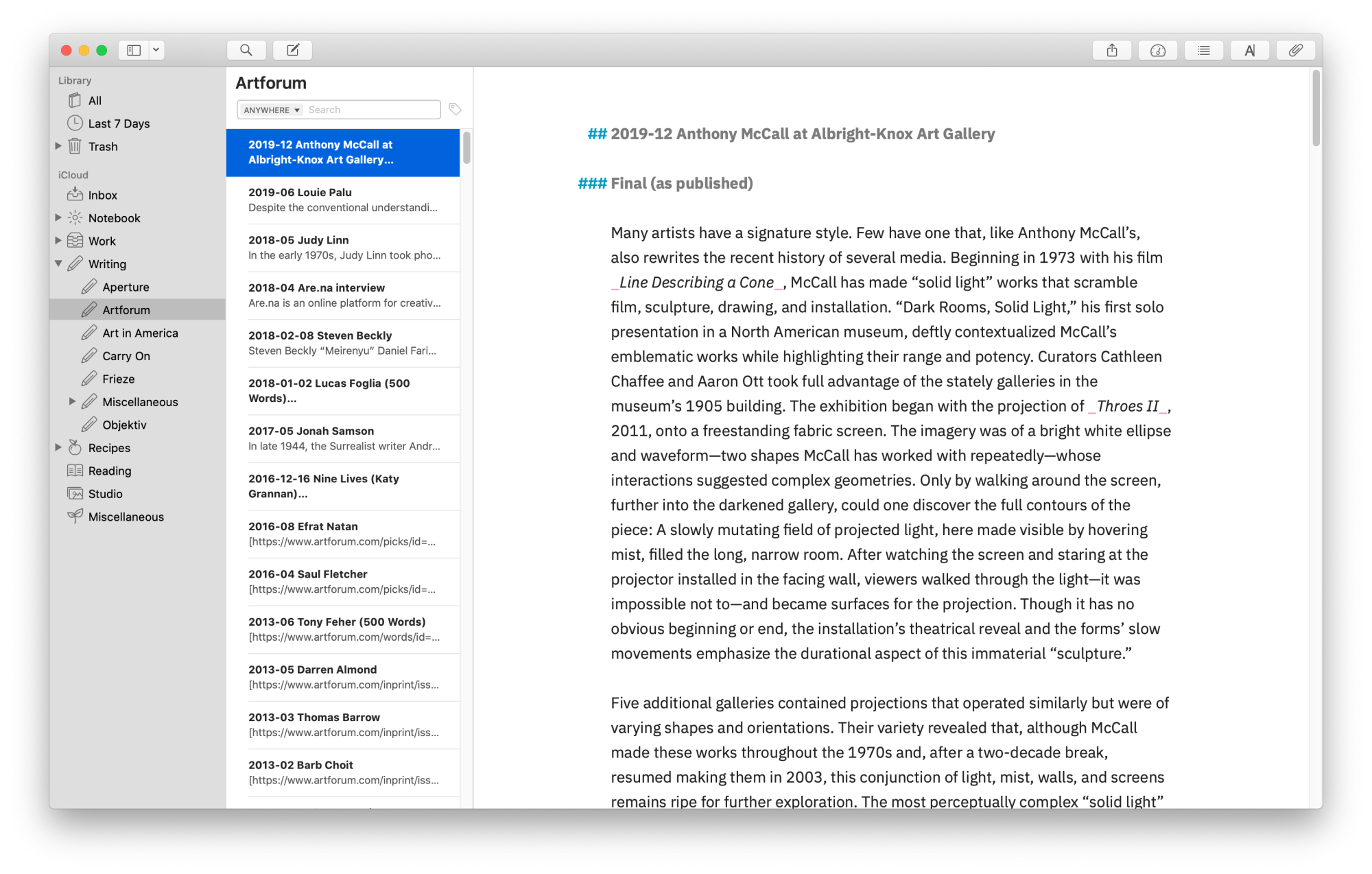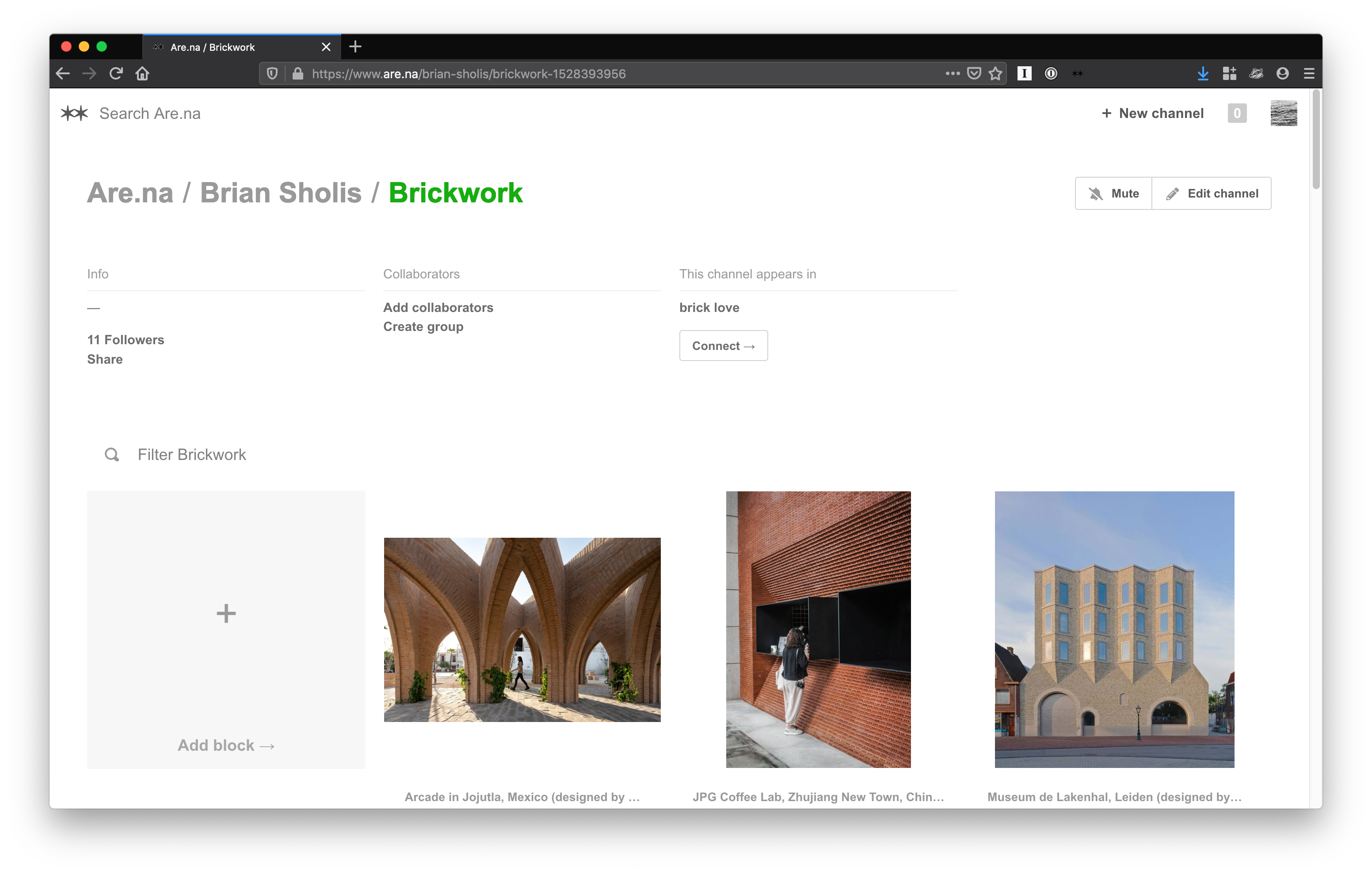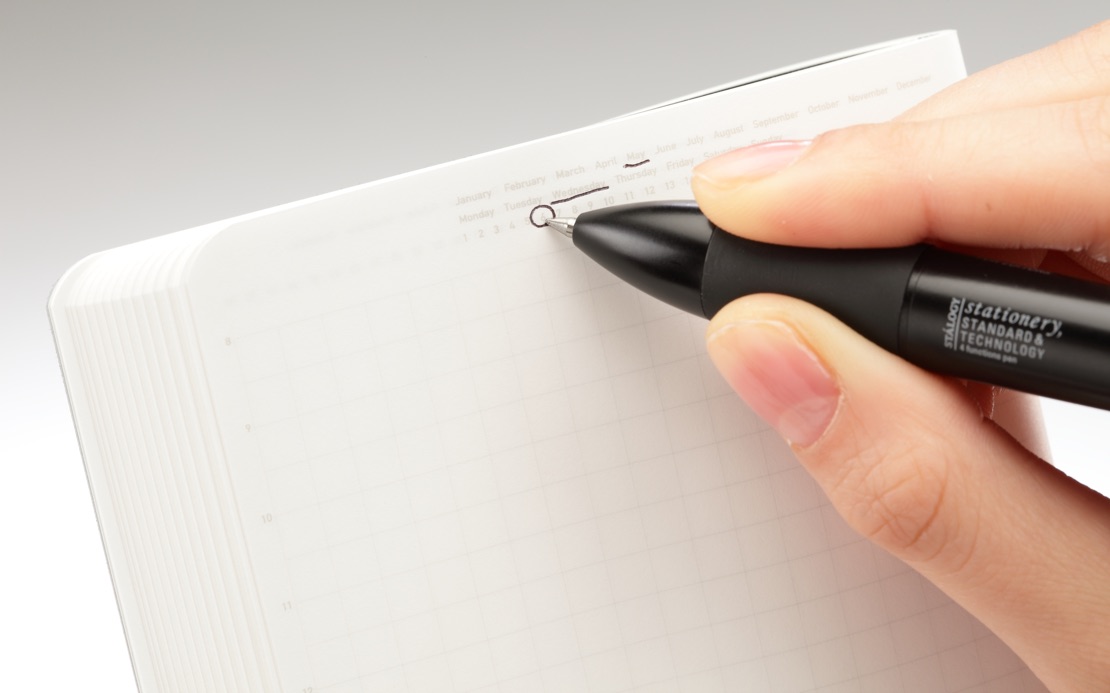My 2020 Setup
On the tools I use and why I use them
I don’t often make resolutions. But every January I take stock of how I apportion my time and the tools I use to work. After conversation with a few friends and seeing others’ posts, I thought I’d share what tools I use currently and why I use them. I work within Apple’s ecosystem, though several of the services I use are cross-platform.
My choices stem from two values: ➀ In balancing convenience and privacy, I prefer to keep my work and personal information to myself; ➁ I like to use software made by independent developers. Also, for the purposes of archiving, I work in plain-text files where possible. Plain text can be read by nearly any piece of software, giving me confidence that I can change my work environment as my needs change and that I will have access to my work far into the future.
Project and File Management, Tasks
Airtable (web/iOS). I use Airtable for tracking all my major projects (and have convinced several organizations I work with to use the service). It’s a stable, well-funded software company that provides powerful databases that look, to users, like spreadsheets. If you’re familiar with Excel or Google Sheets, you can use Airtable, and as you become more comfortable you can expand the way you work with it. My wife and I used it to manage the renovation of our house, use it to keep track of our spending, and use it to maintain an active database of her artwork. I use it to track the hours I work for clients, as well as the invoices I send and payments I receive. I use its forms feature to solicit feedback on projects or field submissions to open calls. The service has a generous free tier, active support forums, and its help team has been responsive to my (few) queries.
Things (MacOS/iOS only). Cultured Code’s decade-old task manager is simple, refined, reliable—and opinionated. It’s based on David Allen’s Getting Things Done system; it doesn’t allow attachments; it doesn’t allow collaboration. But once you lock in to its way of working, it’s hard to resist: easy to use, fast, elegant, unobtrusive. For the tasks I need to share with Julia, I use Todoist.
Sync (web/MacOs/iOS). For years I used Dropbox, but eighteen months ago I switched to Sync for its security features, including end-to-end encryption; encrypted, expiring share links; and data storage on Canadian servers. It’s less visually polished than Dropbox, but it has relative feature parity and is as reliable. I feel more confident storing and accessing important documents, like health records, using Sync. I maintain a free-tier Dropbox account for receiving files from clients.
Apple Mail (MacOS) and Microsoft Outlook (iOS). Though other apps are more convenient, I use Apple Mail for desktop email. The recent redesign of Apple’s iOS client is so bad, unfortunately, that I no longer use it on my phone. Outlook is a solid, well-designed alternative. I use an IMAP email account run through my web-hosting company and have tried, over the past two years, to minimize the amount of newsletters and publicity emails coming into my account. (At one point I discovered that, thanks to more than a decade of work in the art world, I was on more than two thousand gallery and museum email lists. That number is way down—more on that below.)
Writing and Editing

Ulysses (MacOS/iOS). There is great competition among writing apps, and for several years I oscillated between Ulysses, Bear, and iA Writer. I like iA Writer for its use of discrete plain-text files (rather than dumping them into a SQLite database) but dislike its limited folder navigation. I like Bear for its elegant implementation of hashtags and its ability to export to JPG but dislike its limited customization options. I have come to enjoy and rely on Ulysses because of its elegance, features, stability, and how well it handles many and large writing projects. I also like that you can customize both its themes and its export styles, which has helped me to move texts from the app into Microsoft Word, Google Docs, and Apple Pages for clients. I currently have about 866,000 (🙄) words stored in the app.
Research
Feedbin (web)/Reeder 4 (MacOS/iOS). I rely on RSS feeds to handle the daily onslaught of information and have happily settled on a paid Feedbin account to coordinate my subscriptions. Feedbin’s killer feature, for me: it creates a private email address you can use to sign up to newsletters. I have moved hundreds of subscriptions out of my inbox and into a “Gallery and Museum Emails” folder that I check on my own schedule. (I know about inbox filtering, but am too compulsive to rely on that.) I also subscribe to the Twitter feeds of the roughly dozen people and organizations from whom I want to see every tweet; knowing I won’t miss updates from these accounts enables me to check Twitter less often. I use Reeder 4, an elegant app, when I don’t use Feedbin on the web.
Pinboard (web)/Pinner (iOS). Pinboard is quickly becoming my auxiliary brain. Every time I read an article of interest I save it (with tags for later retrieval). I have also begun saving other online media—artists’ websites, music videos, PDFs of essays and book chapters—to the service. It is simple, unpretentious, reliable, extensible, and my data is portable. I pay $25/year for an account that creates a copy of everything I save, since so many pages and files disappear from the websites on which I originally find them.
Are.na (web/iOS). I like the ideas behind Are.na so much that I interviewed its founders. It’s an online platform for “creative thinking and collaborative research.” I don’t use it as collaboratively as I could and end up treating it a little more like a hipster Pinterest. It’s still valuable to me. It’s where I save anything visual that I want to remember as visuals: typefaces, architecture, beautiful examples of brickwork, editorial design, images to inspire Julia in her studio.

Instapaper (web/iOS). My read-it-later service of choice. Any article or blog post I come across (when I’m not deliberately reading) gets saved to Instapaper. I have a paid account for unlimited highlighting, which allows me to mark important passages as I go (to send to Pinboard at a later date). My wife uses Pocket and I keep her account on my devices so that I can send things to her as well.
MusicHarbor (iOS). I use Apple Music, which does not reliably alert you to new releases by every artist you follow. This app rectifies that. Every Friday evening I open it up to discover new music from some of the hundreds of musicians and bands I follow.
Miscellaneous
Here are the apps I use as replacements for the stock Apple apps. All offer upgrades in utility, convenience, or design over their counterparts.
- Firefox (web/iOS).
- Alfred (MacOS). I use Alfred so much I have substituted it for Apple’s Spotlight.
- Hello Weather (iOS). Warm, welcoming, information-dense design; made by three programmers as a side hustle; elegant Today View widget.
- Halide (iOS). The best camera app, hands down.
- Fantastical 2 (MacOS/iOS). Elegant design (especially on iOS) and natural-language input, which makes adding events to the calendar a breeze.
- Overcast (iOS). Podcast apps are also competitive, but I’ve used and enjoyed Marco Arment’s Overcast for years.
- Cardhop (MacOS/iOS). Relatively new to my setup (who needs a better contact-management app?). Cardhop offers time-stamped notes; birthday reminders; initiating contact directly from the app; groups; multiple-account integration—it’s very well done. From the makers of Fantastical.
- 1Password (MacOS/web/iOS). My other auxiliary brain.
- Calcbot (iOS). An upgrade because of its unit-conversion capabilities and its Apple Watch tip calculator.
- Scanner Pro (iOS). One of the few scanning apps that allows you to store scans on-device or on iCloud. Adobe’s and Dropbox’s are a little better and more elegant, but they make you put your files on their proprietary servers.
- Authy (iOS). Until I splurge on a YubiKey, this is my two-factor-authenticator of choice.
- V for Wiki (iOS). An elegant skin for Wikipedia that also opens onto a map view that shows Wikipedia entries for people, places, and events that are nearby. I like opening it up when I travel to learn about what’s around me.
- JustPressRecord (iOS). I lost an hourlong artist interview using Apple’s Voice Memos app. Switched to JustPressRecord and have enjoyed its simplicity, the ease of getting files out of it, and its reliability.
- IVPN (MacOS/iOS). We use IVPN whenever we have to connect to public networks—and sometimes when I want to access geo-fenced video content. It’s reliable, relatively easy to use, and has servers in every place I’ve ever wanted there to be one.
For making Sholis.com
- Visual Studio Code (MacOS)
- Transmit (MacOS). The best FTP client, hands down.
- Dreamhost (web). I’ve used this company’s web-hosting services on and off for fifteen years. I’m back on and happy with its reliability, speed, ease of use, and help-staff responsiveness.
- Kirby (web). A useful, growing, and constantly evolving content-management system. It’s rich in features without being cluttered.
- Pixelmator (MacOS). Because I can’t justify an Adobe subscription—or, for that matter, a Pixelmator Pro subscription—I use this workhorse Photoshop alternative for my light image-editing needs.
Analog

I adore Stalogy Editor’s Series 365 Days notebooks (mine is A6 and black) and Muji (0.38mm), Pilot Hi-Tec C (0.4 mm), or Uni-ball Signo UM-151 (0.38mm) gel-ink pens—always in navy or blue-black.